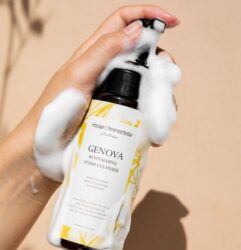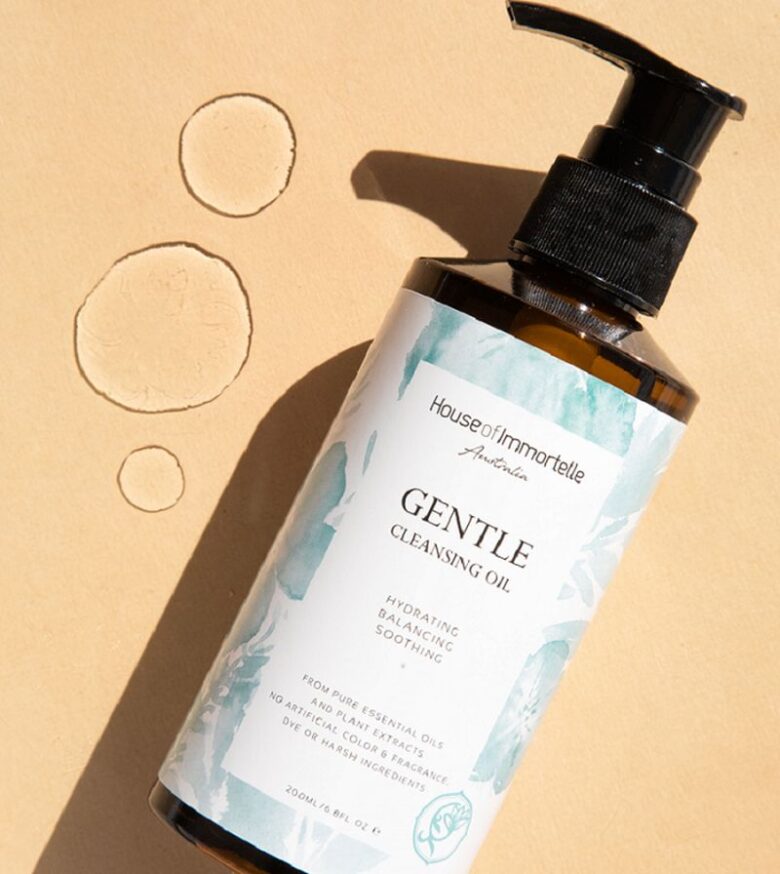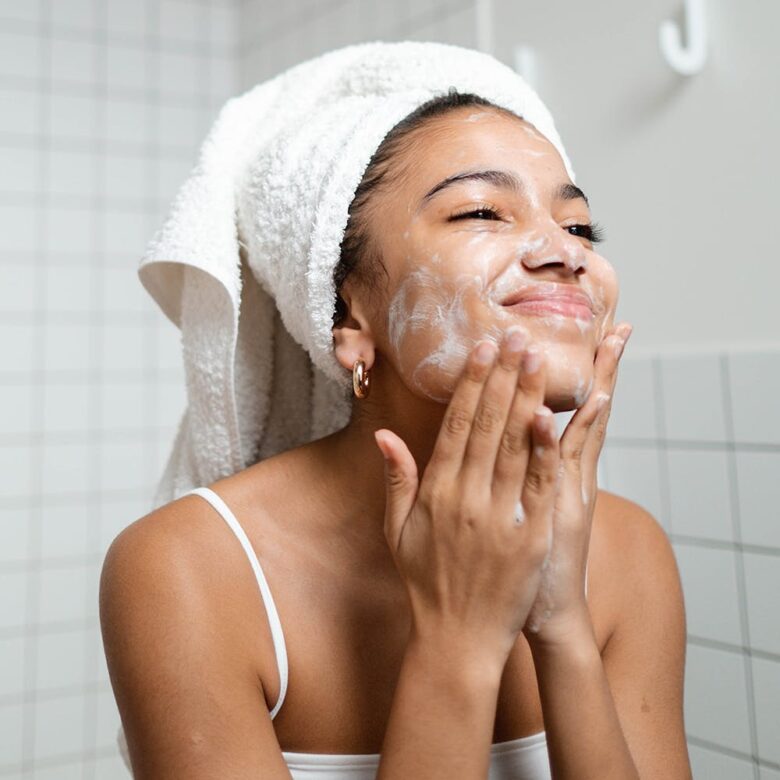
Choosing the Ideal Cleanser for Your Skin Type
Table of Contents
Cleansing our skin is a fundamental step in maintaining a healthy and radiant complexion. As the largest organ in our body, our skin is exposed to a daily barrage of pollutants and impurities. If you wear make-up, your face is exposed not only to these pollutants but also to make-up residue on a daily basis.
That is why cleansing is not just a daily ritual, but an essential part of skincare. It is the cornerstone of maintaining healthy skin by removing dirt, excess oil, and dead skin cells.
However, choosing a face cleanser can be a daunting task. With so many products to choose from, like the extensive range available at House of Immortelle, it is important to understand the different types of cleansers and which ones are best suited for your skin type.
3 popular varieties of facial cleansers
1. Foaming Cleansers

Foaming face cleansers are typically in gel or liquid form and produce foam when activated with water. Surfactants are key components of foaming cleansers and have both hydrophilic (water-attracting) and lipophilic (oil-attracting) properties. When you massage the foaming cleanser onto your wet skin, the surfactants attract both oil and water. As you rinse, the lather helps to lift dirt, excess oil, make-up, and other impurities from the skin’s surface.
The foaming and lathering action of a refreshing foam cleanser also helps to emulsify oil-based substances, allowing them to be easily rinsed away with water. As the cleanser rinses away, it takes the dissolved dirt and oils with it, leaving the skin feeling clean and refreshed.
2. Cream Cleansers
Cream-based face cleansers are designed to gently cleanse the skin without stripping away its natural oils, making them a gentle and moisturizing option. These cleaners are typically formulated to contain a blend of emollients, moisturizers, and sometimes mild surfactants.
When you apply a gentle milky cleanser to your dry or moist skin, the consistency of the cream allows it to bind to the oils, makeup, and dirt present and dissolve the impurities. Gently massaging your hands as you apply the cleanser to your face also helps break down and remove impurities.
3. Oil Cleansers

Oil face cleansers work on the principle that ‘like dissolves like’, which means that the oils in these cleansers can effectively dissolve and remove other oils of the same composition, which includes dirt, make-up, grime, and other impurities that have accumulated throughout the day.
The key ingredients in a gentle cleansing oil are a blend of beneficial oils that can bind to the impurities on your face, emulsify them as you rub the cleansing oil in, and break them down so they can be washed away easily. This makes oil cleansers excellent at removing impurities without overly drying your skin, helping your skin maintain its natural moisture balance with the added nourishment of the ingredients used.
Cleansers for different skin types
Understanding how to cleanse your skin effectively starts with identifying your skin type and then choosing a cleanser that best suits it.
Here are some skin types and the cleansers that work best for each:
1. Cleansers for dry skin
You know you have dry skin if you often feel tightness, itchiness, or notice flaking. If this is your skin type, cream-based cleansers are particularly beneficial as they contain emollient-rich formulations that help to replenish and nourish the skin, preventing further dehydration after cleansing.
Cream cleansers containing ingredients such as hyaluronic acid, ceramides, shea butter, or natural ingredients that do the same are excellent choices.
These cleansers not only remove impurities but also provide the necessary hydration to promote a soft and supple complexion.
2. Cleansers for oily skin

Oily skin tends to produce excess sebum, giving it a shiny appearance and potentially leading to acne or enlarged pores. If you have oily skin, a refreshing foam cleanser is ideal as it effectively deep cleanses, helping to remove excess oil without over-stripping the skin.
When choosing a foaming cleanser, look for those that contain ingredients such as salicylic acid or tea tree oil. These ingredients can help control sebum production and prevent breakouts.
3. Cleansers for combination skin
Combination skin is often a mix of dryness and oiliness, with the T-zone of the face being oily and the cheeks drier. If you have this skin type, a foaming cleanser is ideal as its lathering action removes excess oil from the T-zone without drying out the cheeks. Ingredients such as aloe vera or chamomile can help soothe and balance combination skin for a more even complexion.
4. Cleansers for acne-prone skin
Although it may seem counterintuitive, oil-based facial cleansers can be excellent if you have acne-prone skin, especially when formulated specifically for this skin type. These cleansers are designed to dissolve excess oil, impurities, and makeup without clogging pores or causing breakouts, making them particularly suitable for acne-prone skin.
Some key considerations when choosing an oil face cleanser for acne-prone skin include ensuring the formula is non-comedogenic (does not clog pores), uses lighter oils such as grapeseed and jojoba, and incorporates other acne-fighting properties such as tea tree or salicylic acid.
Final thoughts
Understanding the formulations and the specific needs of your skin type can significantly impact the efficacy of your skincare routine.
Whether it’s a foaming cleanser for oily skin, a creamy cleanser for dry skin, a choice of formulations for normal skin, or an oil-based cleanser for acne-prone skin, there’s a cleanser for everyone.
By identifying your skin type and specific needs, you can ensure that your cleansing routine becomes an essential step towards healthier, radiant skin.
